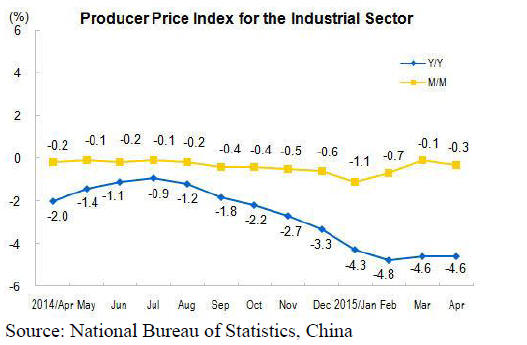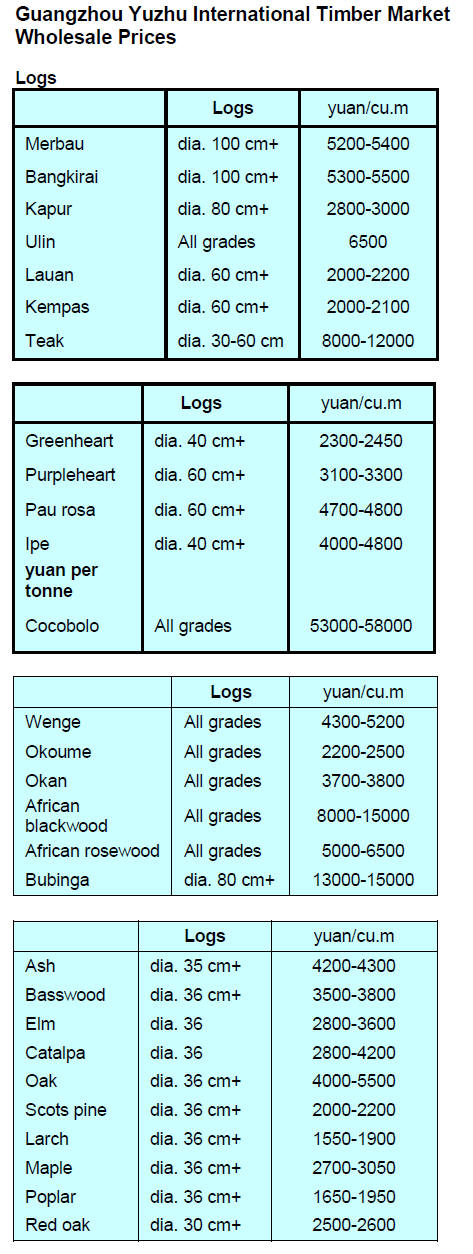US Dollar Exchange Rates of
10th May 2015
China Yuan 6.2073
Report from China
Third interest rate cut in five months
The People‟s Bank of China has announced that the
lending rate would be reduced by a quarter of a percent to
5.1 percent seen as a move to boost spending and lift the
economy. This is the third time in five months that the rate
has been cut.
Weaker than expected export figures, with April exports
dropping over 6% along with signs of weakness in other
areas of the Chinese economy are beginning to worry
policy makers.
A reduction in interest rates would normally drive up
business investment but the business community in China
has a watchful eye on developments in major export
markets and is unlikely to look for loans until the global
economy strengthens further.
Weaker than expected industrial producer prices
The National Bureau of Statistics released the April
Producer Price Index (PPI) for manufactured goods in
early May showing a decline of 0.3% month-on-month
and a 4.6% drop year-on-year.
In the same month the purchasing price index for
manufactured goods fell 0.2% month-on-month and was
down 5.5% year-on-year.
At the same time consumer inflation increased at a much
slower rate than anticipated and the April figure marked
the 37th consecutive month of declining pace of growth.

¡¡
Importers reminded of suspension of imports from
Laos
On 6 April 2015, the CITES Secretariat received an
adequate national ivory action plan from the Democratic
Republic of the Congo. The plan has been made available
on the Secretariat‟s national ivory action plan web portal
at http://cites.org/eng/niaps.
CITES has now informed participating countries that its
recommendation to suspend commercial trade in CITESlisted
species with the Democratic Republic of the Congo
has been withdrawn.
China‟s National Endangered Species and Import
Management Office has reminded timber importers not
import CITES listed timbers from Laos as the directive
from CITES Standing Commission still applies to CITESlisted
species from the Lao People‟s Democratic Republic
due to the failure to submit a National Ivory Action Plan.
http://cites.org/sites/default/files/notif/E-Notif-2015-
021.pdf
The total output value of China¡¯s forestry industry in
2014
According to the State Forestry Administration, the value
of output from China‟s forestry sector in 2014 was
RMB5.26 trillion, up 11% over 2013.
The contribution from the secondary and tertiary sectors
was over 65%. The report notes that in 2014 100,000
different forest products were produced; there were more
than 1 million forestry enterprises and millions of forest
farmers. It was been reported that the annual average
growth in the value of output from the national forestry
sector was 22% since 2001.
Calls for the legalisation of the China-Myanmar timber
trade
A national workshop on the China-Myanmar timber trade
was held on 22 April in Kunming City, Yunnan Province.
The workshop was sponsored by the Southwest Forestry
University and the FLEGT foundation of the European
Forest Institute (EFI) and hosted by the Greater Mekong
Sub-Region Forestry Development Research Center of
Southeast Forestry University.
Participants shared the preliminary results of a China-
Myanmar timber trade study and discussed the challenges
and difficulties encountered by timber traders who aim to
see the legal and sustainable development of the China-
Myanmar timber trade. Experts called for immediate
action to bring the trade under the law.
The workshop heard that some timber from Myanmar is
processed in Yunnan while some is transported to
manufacturers in Southern and Eastern China who then
sell into the domestic market as well as export products to
Japan, the USA and Europe.
China is one of Myanmar‟s important markets for wood
products and China accounted for around 37% of
Myanmar‟s wood product exports in 2013 valued at
USD621 million.
But clouding the legitimate trade remain some
considerable challenges as illegal timber is also crossing
the Myanmar/China border.
Myanmar and China recently agreed to implement a series
of measures proposed by authorities in Yunnan Province
aimed at cooperative management of Myanmar‟s timber
and mineral trade. These measures require timber
importers to submit registration certificate and trade
contracts approved by the central government in
Myanmar. Controlling the Myanmar/China timber
presents huge challenges.
Investigation show that the redwood trade between
Myanmar and China slowed after June of 2014. However,
workshop participants heard that it was difficult to judge if
the slowdown was the result of the log export ban in
Myanmar or factors such as the rainy season, armed
conflict in Kachin or other factors.
Lower imports from Guyana
According to the statistics from Zhangjiagang Entry-Exit
Quarantine and Inspection Bureau, deliveries of timber
from Guyana through Zhangjiagang port have fallen and
only 6,000 cubic metres was delivered in the first quarter.
The species from Guyana include purpleheart and koraro
and these timbers were transported to China in containers.
   
|